Index
Page 3 of 10
Elitegroup P55H-A:
Features:
Intel P55
4+2-phase VRM
uPI semiconductors uP6206AK VRM controller cpu-portion
uPI semiconductors uP6203A VRM controller northbridge-portion
Realtek RTL8111DL PCIe Gb LAN controller
JMicron JMB361 PCIe SATA II/PATA controller
ITE IT8720F super I/O controller
Realtek ALC888S
ICS 9LPRS926EGLF clock generator
passive cooling of chipsets/VRM
16Mb BIOS, version: 1.00, 1.1beta
Mainboard Revision: 1.00
Slots:
2x PCIe 2.0 x16, 1x x16 or 2x x8
1x PCIe 2.0 x4 @ x2 speed
1x PCIe 2.0 x1 @ x0.5 speed
2x PCI
Memory:
4x Dual-Channel DDR3-slots for PC3-10667U memory up to 16GB
Storage:
6-Port SATA II featuring RAID 0, 1, 5, 0+1, JBOD
1-Port PATA
Backpanel ports:
1x PS/2 keyboard
1x PS/2 mouse
1x Gb LAN
8x USB 2.0
1x eSATA II
7.1 analog audio
1x optical audio out
1x CMOS clear button

Accessories:
4x SATA cable angled with clips
1x PATA cable
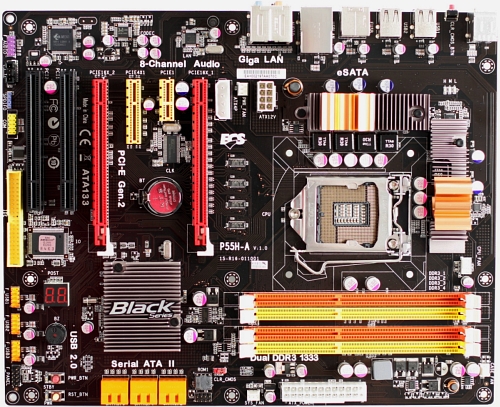
Layout:
The first thing you notice is that this board is not an high-end board, it's entry level. With the labeling as "Black Series" Elitegroup suggesting this is better than a normal board. But we are disappointed. While it features an all solid cap design, it does not feature all solid inductors.
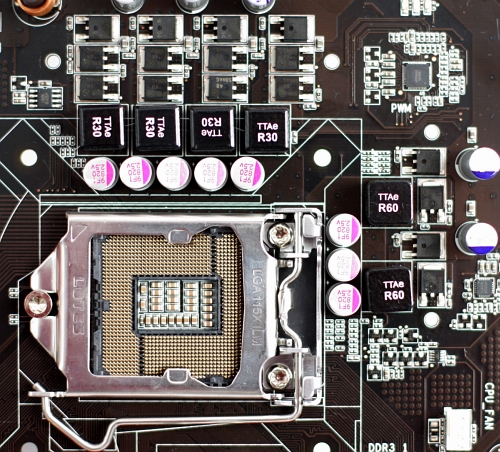
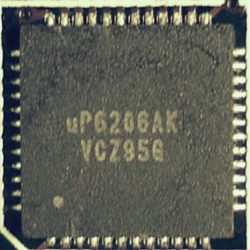
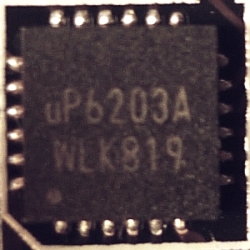
The VRM is an analog 4-phase design without any fancy stuff. Elitegroup changed the supplier for its VRM controllers from ISL to uPI semiconductors. We saw one of this controllers only once on the eVGA X58 SLI board and we were not impressed. Because the northbridge portions of the 1156 CPU do need a separate VRM, two phases are just for that. The controllers are so tiny we struggled to make good pictures. At least in idle the VRM works very well. The CPU-power connector is also odd placed, making connecting it a bit of a mess.
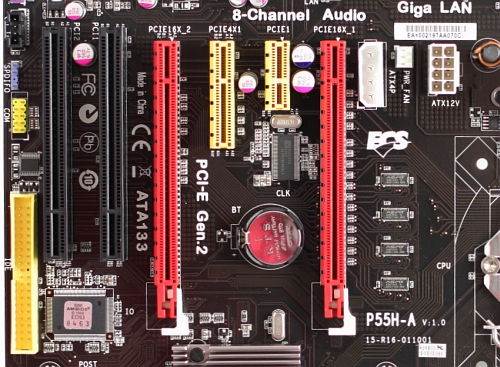
The slot design is very straightforward. Two PCIe 2.0 x16 slots give you the capability to use Crossfire. This board will not support SLI. The PCIe x4 slot will not be available, if you are using two two-slot PCIe graphics cards. For some reason Elitegroup decided to place a 4-pin molex-connector on the board, which is totally unnecessary and so it loses one PCIe slot.
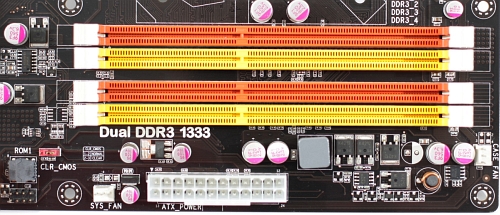
The memory slots are too close to the CPU socket. This may give you some problems with some big CPU-coolers. We have no information yet, if the CPU can use any memory slot you choose or if you have to use slot 1 as you have to do with the i7 900 series, but we think so. The power-connector is at a safe distance, so no problems there.
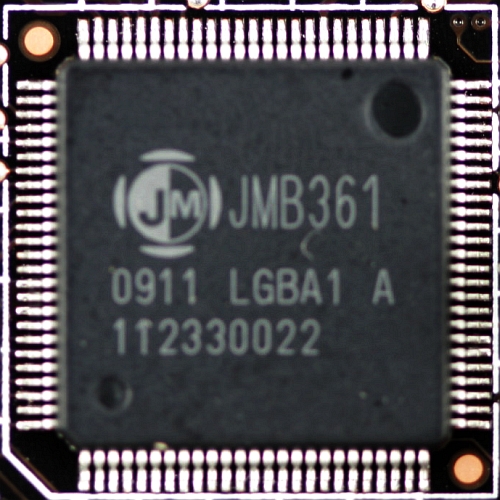
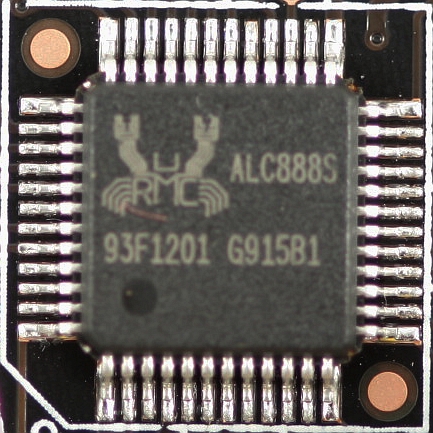
For some reason all vendors go for the cheapest PCIe Gb LAN solution on the market, which is the recently introduced Realtek RTL8111DL. It' does make sense on a sub €100 board, but we expected more. While we like eSATA ports we wonder what's the price difference between an JMB361 and JMB362 controller, as the later offers two SATA ports. The ALC888S is quite standard these days, the S indicating it does support separate streaming for Skype, but an ALC889 would have the same features with better SNR ratios.

The SATA connectors are on the edge of the board and all of them are angled at 90°. This is the best solution available because the connectors won't interfere with any cards. Sadly the PATA connector is on the left side of the board near the second PCI slot. Meanwhile we would not be sad to see this connector gone.
BIOS:
The BIOS is quite standard for Elitegroup. Still it does not feature NX-Bit by default. Also the HPET feature is hidden, but Elitegroup told us it is enabled by default, so a disabled NX-Bit makes no sense. Also the board has a known bug which does not support reducing the Uncore multiplier. While we got a fixed BIOS, it does still not show up on the webpage. The lack of Elitegroup not supplying BIOS updates at a fast pace, does not speak for a "Black Series" board.
The board is slightly underclocked, it runs with 132.7MHz:
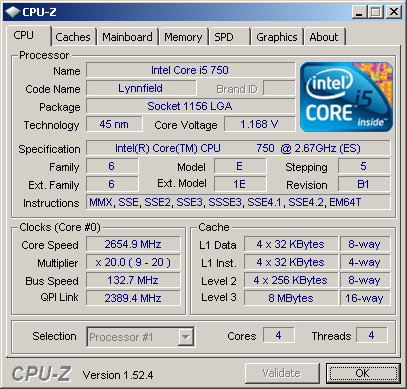
This is the only board which does not manage to overclock to 200MHz virtual FSB. 196MHz was the maximum stable frequency which resulted in a 3.92GHz clock:

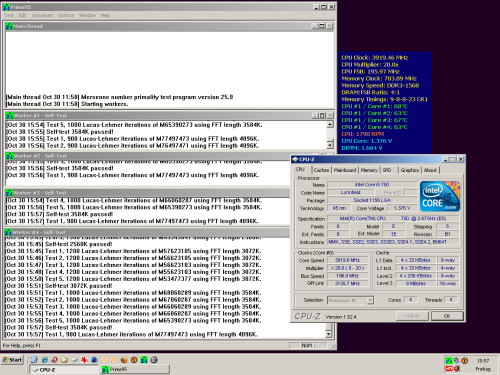
The Elitegroup board is the only board not featuring any under-voltage options, very disappointing.
